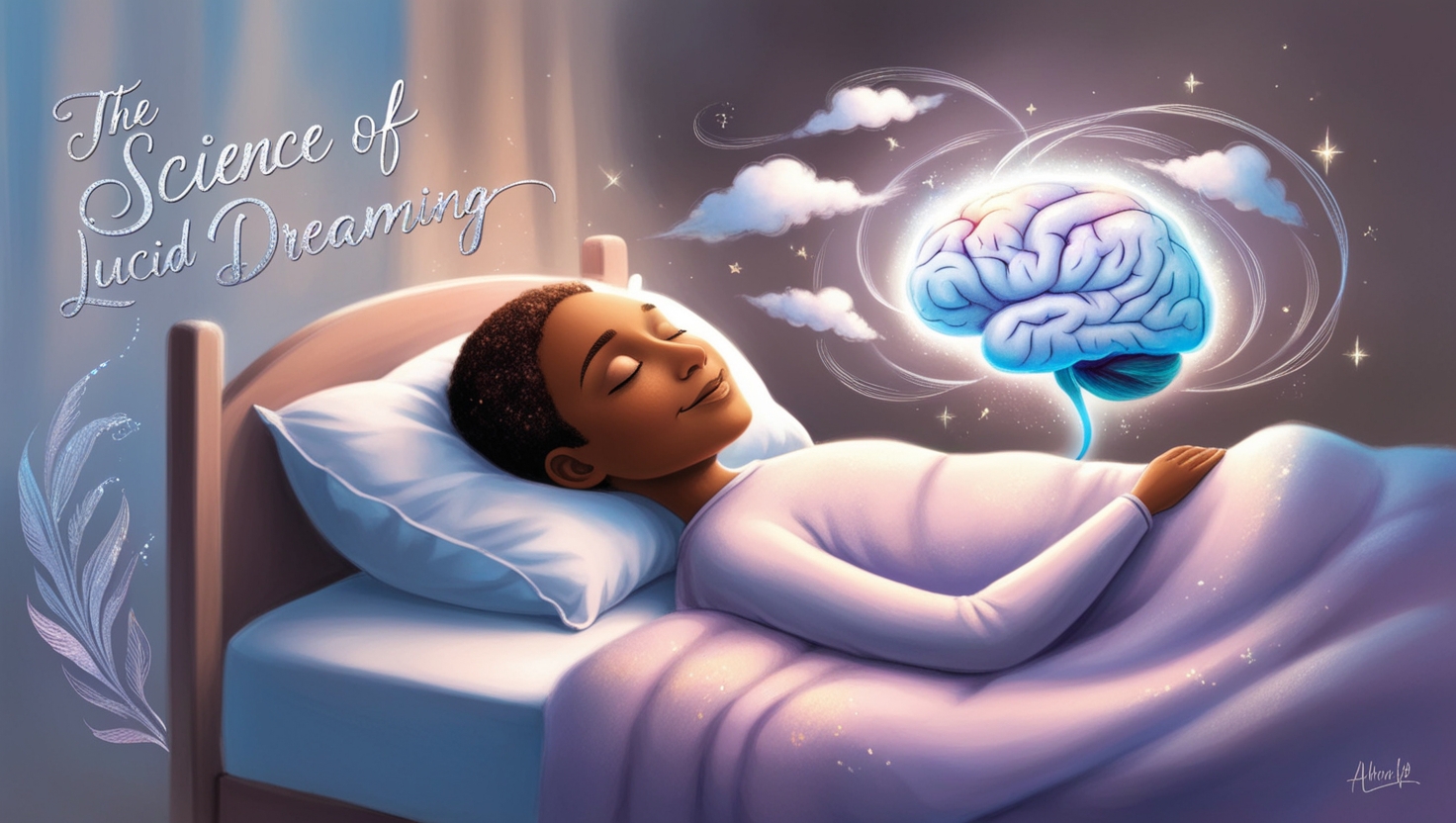by Saad, 26-Sep-2024
Mystery of Lucid Dreaming
Dreams have fascinated humanity for centuries. From ancient cultures interpreting dreams as messages from the gods to modern scientists exploring them as windows into the subconscious, the realm of dreams remains one of the most elusive and mysterious areas of human experience. Among the many fascinating phenomena in the world of dreams, lucid dreaming stands out as an ability that promises a tantalizing possibility: to control the dream itself. But how does this happen? Is lucid dreaming just a myth, or is there science behind it? Let’s dive deep into the science of lucid dreaming and explore whether we can truly control our dreams.
What is Lucid Dreaming?
Fundamentally, lucid dreaming happens when the dreamer realizes they are dreaming. This awareness allows the dreamer to exert some level of control over the dream’s content and direction, transforming the typically passive experience of dreaming into an active, conscious one. The experience of lucid dreaming can range from a fleeting realization to full control over dream elements like environment, characters, or even the laws of physics.
The History of Lucid Dreaming
Lucid dreaming isn’t a modern discovery. The concept has roots in ancient times. Tibetan Buddhists practiced a form of dream yoga thousands of years ago, which involved remaining conscious during sleep. Similarly, ancient Hindu texts also contain references to dream control. However, it wasn’t until the late 20th century that scientists began to seriously investigate the phenomenon.
The term lucid dreaming was coined by Dutch psychiatrist Frederik van Eeden in 1913, who described this phenomenon in detail. Since then, researchers have been studying lucid dreams not just for their intriguing nature, but also for their potential applications in therapy, creativity, and even neuroscience.
The Science Behind Lucid Dreaming
Lucid dreaming was long thought to be anecdotal, but modern science has provided tangible evidence that it’s a real, measurable phenomenon.
How Do Lucid Dreams Happen?
During sleep, our brain cycles through different stages, including Rapid Eye Movement (REM) sleep, the phase where most dreaming occurs. In a normal dream, the brain is largely unaware that it’s dreaming, and the dream unfolds without any conscious input. However, in a lucid dream, something different happens: part of the prefrontal cortex, the area of the brain responsible for self-awareness and decision-making, becomes activated, even though the person is still in REM sleep.
Studies using electroencephalograms (EEGs) and functional magnetic resonance imaging (fMRI) have shown that lucid dreamers exhibit brainwave patterns different from those of regular dreamers. These dreamers demonstrate heightened gamma wave activity, which is associated with heightened awareness and cognitive control.
Inducing Lucid Dreams
Lucid dreaming is not only for the lucky few. With practice and proper techniques, anyone can learn how to achieve lucidity while dreaming. Among the most widely used methods are the following:.
- Reality Testing: This involves frequently checking whether you’re awake or dreaming during the day. For example, looking at your hands or trying to push your fingers through your palm can become a habit that carries into your dreams.
- Mnemonic Induction of Lucid Dreams (MILD): Created by lucid dream research pioneer Dr. Stephen LaBerge, MILD entails repeating a mantra before going to bed, such as “I will realize I am dreaming,” to bolster the intention of identifying a dream.
- Wake-Back-to-Bed (WBTB): This technique involves waking up after five or six hours of sleep, staying awake for a short period, and then going back to sleep. This method capitalizes on the fact that REM sleep becomes longer during the later sleep cycles, increasing the chances of becoming lucid.
Can You Control Your Dreams?
The short answer is yes, to an extent. While full mastery over the dream world may be difficult to achieve, many lucid dreamers report being able to control at least some elements of their dreams.
What Can You Control in a Lucid Dream?
Once lucid, a dreamer may have the ability to manipulate the dream world. Some common areas of control include:
- Changing the environment: A dreamer might be able to change the setting, summoning up a beach, forest, or even an entirely new world.
- Interacting with dream characters: Dreamers can engage with characters in the dream, asking questions or engaging in conversations.
- Flying and other superpowers: One of the most common experiences for lucid dreamers is the ability to fly or perform other seemingly impossible feats.
- Emotional regulation: In some cases, lucid dreamers have reported the ability to confront fears or manage anxiety within the dream.
However, the degree of control varies from person to person. Some lucid dreamers experience full control, while others may only influence minor aspects of the dream.
How Long Do Lucid Dreams Last
Lucid dreams don’t typically last very long. While the dream may feel extended, actual time in the dream can be just a few minutes. The act of realizing you’re dreaming can sometimes trigger the end of the dream. However, with practice, some people are able to extend the duration of lucid dreams and explore the dream world for what feels like hours.
The Benefits of Lucid Dreaming
Beyond amusement, lucid dreaming provides benefits. It is useful in the following real-world contexts:.
Overcoming Nightmares
One of the most well-known benefits of lucid dreaming is its use in nightmare therapy. People suffering from recurrent nightmares, especially those with conditions like PTSD, can learn to become lucid in their dreams and confront or alter the nightmare’s outcome. This process can reduce the frequency and intensity of nightmares, providing emotional relief.
Boosting Creativity
Many artists, writers, and creators have reported using lucid dreams as a source of inspiration. The unlimited nature of the dream world provides a fertile ground for creativity. Painters like Salvador Dali and writers like Mary Shelley drew inspiration from dreams, and many modern creatives continue to use lucid dreaming for their work.
Improving Problem-Solving Skills
Lucid dreaming allows the mind to approach problems in ways that might not be possible during waking life. Some researchers believe that lucid dreaming can be used to improve problem-solving skills, as the brain is free from the usual constraints and can experiment with different solutions in a safe, simulated environment.
Personal Development and Exploration
Lucid dreaming can also serve as a tool for self-reflection and personal growth. People can use their dreams to confront unresolved issues, explore their subconscious desires, or simply experience new perspectives and ways of thinking. Some dreamers even use lucid dreams to practice real-world skills, such as giving presentations or playing a musical instrument.
The Risks of Lucid Dreaming
While lucid dreaming is generally considered safe, there are some potential downsides to be aware of:
Sleep Disruption
Lucid dreaming can sometimes lead to sleep disruption, especially if the dreamer becomes too focused on achieving lucidity. Overuse of techniques like WBTB may fragment sleep cycles, leading to tiredness or poor sleep quality.
False Awakenings
Lucid dreamers sometimes experience false awakenings, where they believe they’ve woken up, only to find that they are still dreaming. These false awakenings can be confusing or disorienting, especially if they occur multiple times in a row.
Closing thoughts : Unlocking the Dream World
Lucid dreaming offers an incredible opportunity to explore the vast landscape of the mind, turning the passive experience of dreaming into an active, conscious journey. While not everyone can master lucid dreaming overnight, with patience and practice, many people can achieve it. The potential to overcome nightmares, boost creativity, and enhance personal growth makes lucid dreaming a fascinating field of study and a valuable tool for those willing to explore their dreamscapes.
As the science of lucid dreaming continues to evolve, we may unlock even more ways to harness the power of our dreams—blurring the line between the waking world and the sleeping mind.
If you Liked Reading our Blog Read More Blogs Here and Below is the Link to our WhatsApp channel Join it for the Latest Post Updates. (Read For WhatsApp Channel Privacy and Security Here).
UseFull Resources:
| Resources | Resources |
|---|---|
| Tooldar: Tooldar | Hemingway Editor: Hemingway Editor |
| Ilovepdf3: Ilovepdf3 | Grammarly: Grammarly |
| Adorepdf: Adorepdf | Coursera: Coursera |
| Custom Design Agency: Articon Design Agency | Udemy: Udemy |
| Google: Google | Khan Academy: Khan Academy |
| Yandex: Yandex | Wolfram Alpha: Wolfram Alpha |
| Baidu: Baidu | TED Talks: TED Talks |
| Medium: Medium | Skillshare: Skillshare |
| Quora: Quora | Canva: Canva |
| Duolingo: Duolingo | Figma: Figma |
| Nerdfitness: Nerdfitness | Trello: Trello |
| DeepL: DeepL | Notion: Notion |
| LinkedIn: LinkedIn | Asana: Asana |
| Stack Overflow: Stack Overflow | Mailchimp: Mailchimp |
| GitHub: GitHub | Zapier: Zapier |
Note : These Above Resources Are just for Educational and ease of use Purposes we neither Endorse them, they were working at the time of sharing.
.Disclaimer: The information presented in this blog is for educational and informational purposes only and should not be considered financial, Political, or cultural advice. All efforts have been made to ensure the accuracy of the content at the time of writing.
Think We Missed Something?
If you notice an error or have a suggestion, we encourage you to submit a correction. Help us keep our information up-to-date and reliable!











